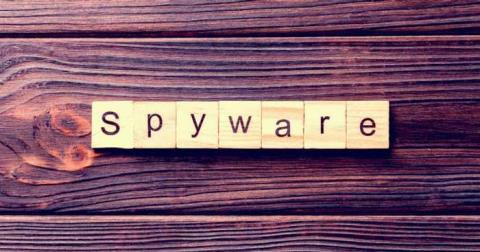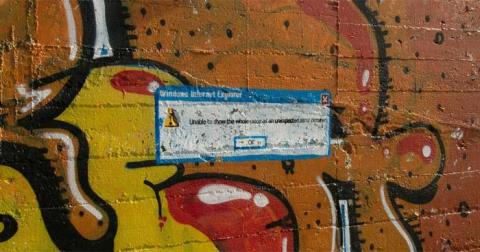How to see yourself like any celebrity with B612

Discover how to find out which celebrities you resemble using the new Familiar Faces feature in B612.
If you’re a Chromebook user and you want to do some troubleshooting, then CROSH is the place to be. But if you are new to this kind of terminal, you may be confused about where to look. Worry not, as this is neither a complicated nor a time-consuming task.

This article shares detailed information about how to open and navigate CROSH so you can access the diagnostics you need without any hassle. Also, we’ll provide essential commands to get you started.
To access CROSH, you need to open the Chrome shell. Follow the steps below:



help to get a list of available options. Additionally, you can type help_advanced for a complete list of debugging commands.
Here are some of the most common commands you can use in CROSH:
| Command | Description |
|---|---|
Exit |
Exit CROSH |
Ping [domain] |
Perform a ping test on a particular domain |
Help |
Display help |
Help_advanced |
Display advanced help |
Battery_test [] |
Battery discharge rate test in seconds |
Memory_test |
Extensive memory testing on free memory |
Uptime |
Check how long the computer has been running since the last shutdown |
Update_over_cellular enable |
Enable auto-updates on the cellular network |
Update_over_cellular disable |
Disable auto-updates on the cellular network |
One of the basic functions you can perform in CROSH is checking the battery level and health of your Chromebook. Follow these steps:



battery_test 1 and hit Enter.


battery_test 10 and press Enter.

If your battery percentage exceeds 50%, it indicates your battery is functioning well.
Important Note: If you aren’t comfortable using the terminal, ensure you back up your files before trying any commands.If you are a student, accessing CROSH on a school Chromebook follows the same procedure:


If you need command assistance, enter help for a list of commands or use help_advanced for more detail.
CROSH can be used on any device with the Chrome browser; however, it provides the most effective functionality on a Chromebook.
You can open CROSH by pressing Ctrl + Alt + t and then hitting Enter. No Developer Mode is required for access.
CROSH is an invaluable tool for diagnostics, enabling users to perform various tests easily. However, executing commands requires careful attention. If uncertain, seek help or conduct further research before proceeding.
If you have any insights or questions regarding your experience with CROSH, please share below!
Discover how to find out which celebrities you resemble using the new Familiar Faces feature in B612.
Learn how to disable the background mode of BlueStacks to enhance your computer’s performance while saving resources.
Learn how to effectively remove old boot menu options on Windows 10. Keep your boot menu clean and optimized for efficiency with these easy steps.
Discover the essential CROSH commands for your Chromebook. Get troubleshooting tips and system configurations to enhance your Chrome OS experience. Learn more!
Zoom is a top video conferencing service for connecting with friends, family, business associates, and classmates on various devices including Amazon Fire tablets.
Discover the advantages of the AccuType Keyboard in Lenovo laptops. Learn why this keyboard enhances productivity and provides a superior typing experience.
Learn how to utilize the SkyShare feature on Skyworth Smart TV for easy connection with your phone or tablet, enhancing your viewing experience.
Learn how to limit your download speed in Google Chrome to manage bandwidth and improve overall performance during downloads.
Discover how to fix the error of not being able to install software on Windows 10/11. Learn essential steps and troubleshooting techniques.
Learn how to create an Instagram account without a phone number. This step-by-step guide will help you sign up using an email address instead, making it quick and easy.
Step-by-step guide to change the location of the data sharing folder between the NoxPlayer Android emulator and your computer for enhanced file management.
Learn how to efficiently delete data (photos, videos, music, etc.) on the Android NoxPlayer emulator.
Learn how to remove fonts easily with PicsArt, one of the leading photo editing applications that enhances your photography experience.
Discover the 11 best Virtual Router Software for Windows that allows you to convert your PC into a virtual Wi-Fi router, enhancing your internet sharing capabilities.
Learn the comprehensive steps to reset your Smart TV Skyworth effectively with WebTech360. Optimize performance and settings!














Fred V. -
The commands mentioned were exactly what I was looking for! Can’t wait to put them into action
Lucy B. -
If anyone’s interested in more advanced commands, I can share some resources I found
Huyền Lizzie -
Thank you for breaking this down! I was overwhelmed with all the Chromebook features until I found this
Anna P. -
This is neat! I opened CROSH and ran a ping test. Super fast results
Peter L. -
I’ve always wanted this feature accessible on my Chromebook. Glad I found this article
Emily Johnson -
This guide is super helpful! I always wanted to know how to open CROSH on my Chromebook without getting lost. Thank you
Hương Đà Nẵng -
Amazed by how useful this information is! Definitely going to keep this link for future reference